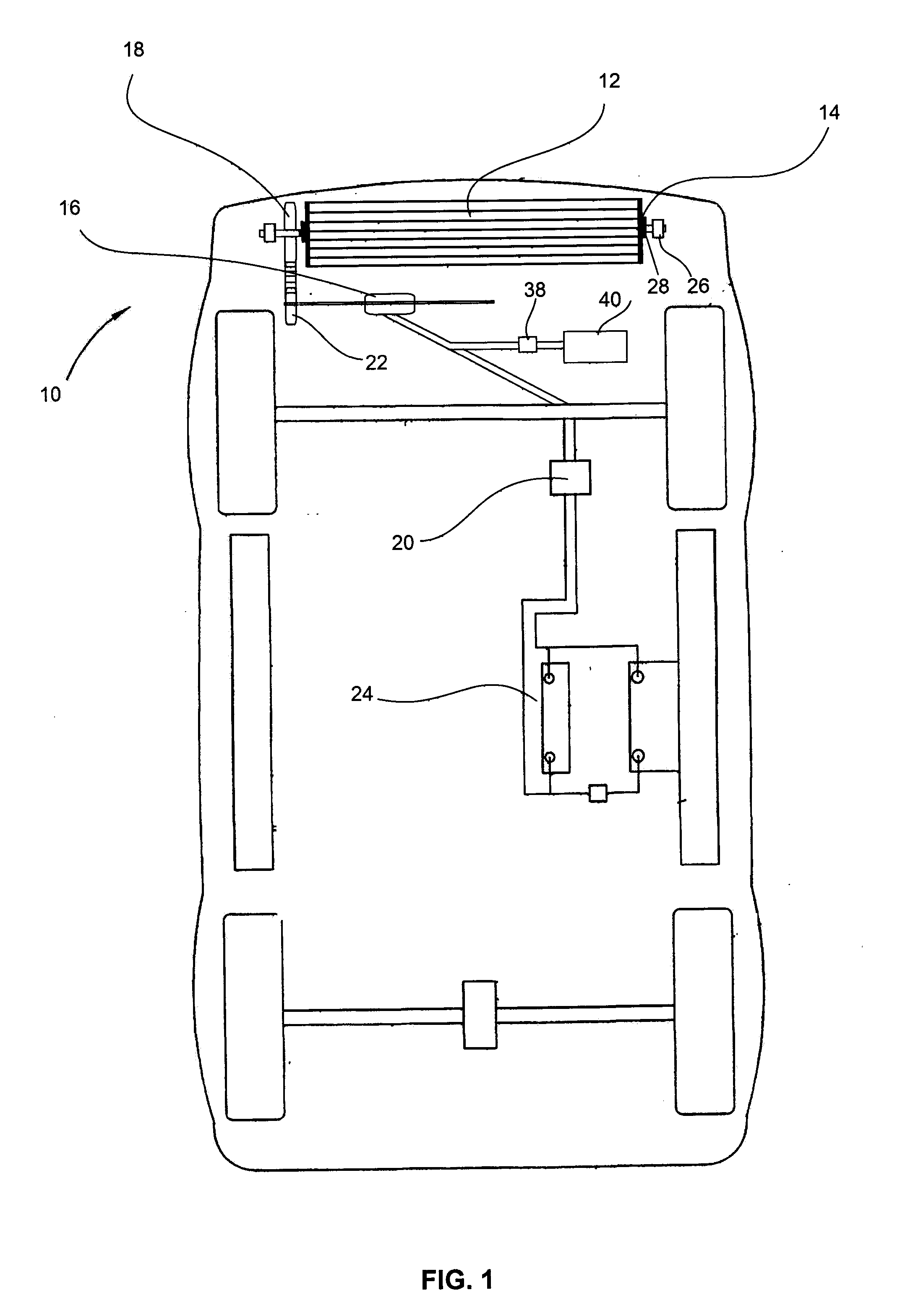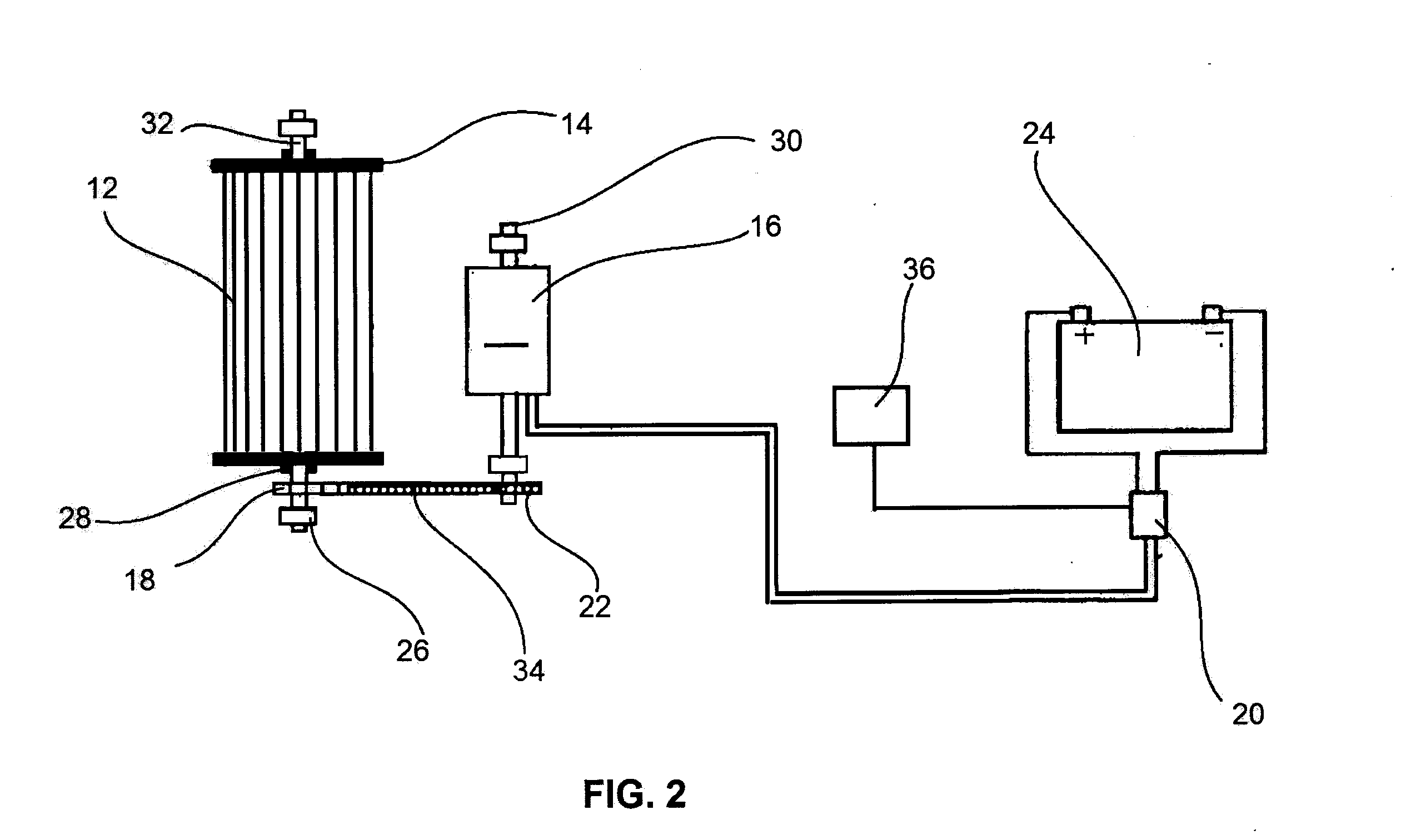Wind powered battery charging system for electric vehicles
- Summary
- Abstract
- Description
- Claims
- Application Information
AI Technical Summary
Benefits of technology
Problems solved by technology
Method used
Image
Examples
Embodiment Construction
[0019]FIG. 1 shows a cutaway view of a vehicle 10 is shown. The vehicle 10 has a turbine 12, flywheels 14 rotatively engaged the turbine 12, and a turbine gear 18 operatively engaged with a lower gear 22. This lower gear 22 drives the generator 16 via a shaft to produce electricity which is used for charging batteries 24. The electricity produced by the generator 16 is also supplied to the to the AC motor 40 via the inverter 38 which converts the electric current to alternating current. If the vehicle can be powered with DC motor, the current for DC motor is supplied directly from the generator. Inverter is therefore not needed.
[0020]FIG. 2 shows an elevational view of the turbine 12, generator 16, flywheels 14, and batteries 24 according to an embodiment of the present invention. Still referring to FIG. 2, the turbine 12 operatively connected to a turbine shaft 32 rotates about a horizontal axis, which passes through the surfaces of turbine chamber 26 and is supported by bearing bl...
PUM
 Login to View More
Login to View More Abstract
Description
Claims
Application Information
 Login to View More
Login to View More - R&D Engineer
- R&D Manager
- IP Professional
- Industry Leading Data Capabilities
- Powerful AI technology
- Patent DNA Extraction
Browse by: Latest US Patents, China's latest patents, Technical Efficacy Thesaurus, Application Domain, Technology Topic, Popular Technical Reports.
© 2024 PatSnap. All rights reserved.Legal|Privacy policy|Modern Slavery Act Transparency Statement|Sitemap|About US| Contact US: help@patsnap.com










